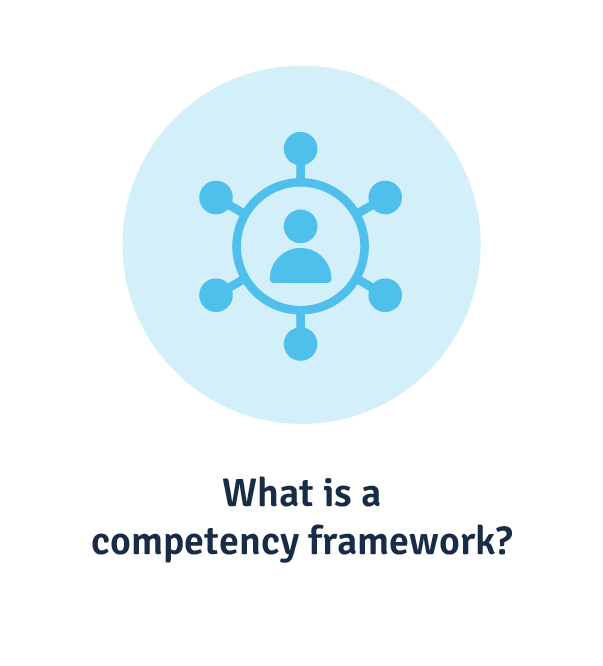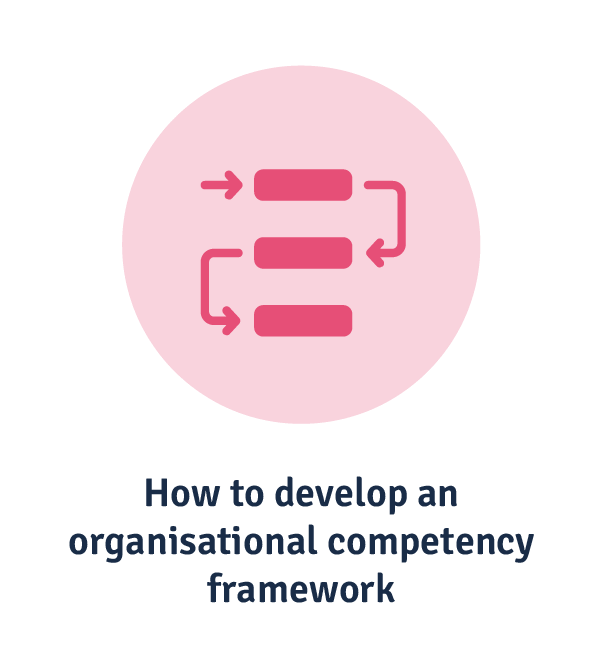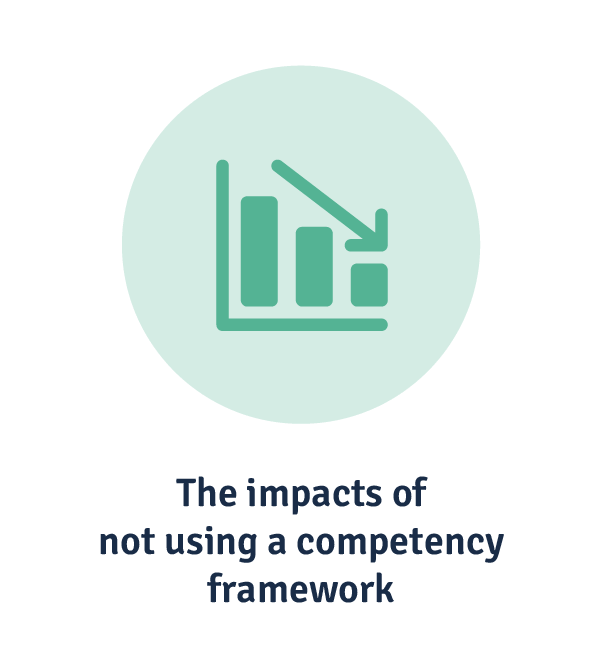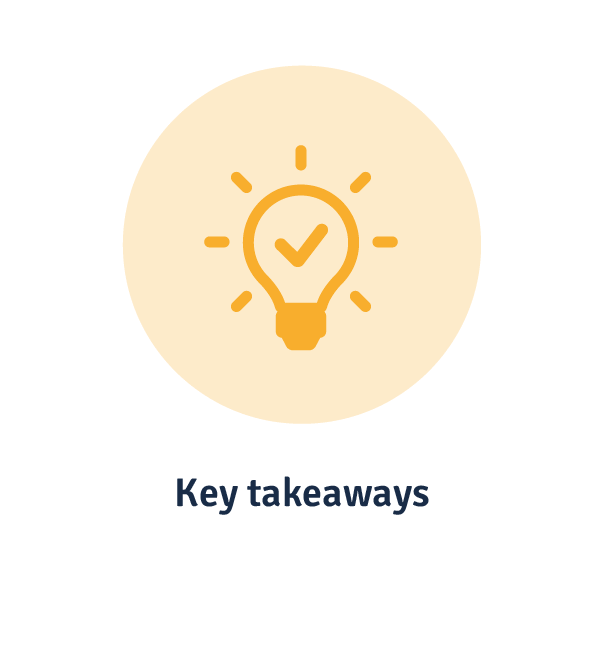Delivering on business promises and services can be hard work, especially if all the moving parts in your organisation (i.e. your employees) aren’t moving in the direction they should be. You want your business to be well-oiled machine in which every part knows what to do and how to do it to keep moving forward.
This is where a competency framework comes into play. It’s an objective resource for businesses to make sure they’re trending in the right direction to meet their business strategy.
So, how do you develop a competency framework for your business? In this guide, we’ll explain the step-by-step process.
What is a competency framework?
A competency framework is a standardised structure used to define competencies that are necessary for employees to have in order to meet business objectives. These competencies are the knowledge, behaviours, expertise and skills needed for an organisation to function and deliver on its goals and services.
What does competence mean?
Competence is defined as having the necessary skills, knowledge, or ability to successfully do something. In the workforce, it’s a measure of your proven skills and knowledge.
Using a competency framework in the workplace
There are several practical uses for competency frameworks in the workplace.
- Measuring the competencies of new and potential employees to assist in the onboarding, training, recruitment and hiring process.
- Assisting with growth, succession planning and the scaling of your business.
- Ensuring that your current employees have the skill sets and expertise required of them to carry out their roles
- Highlighting areas for improvement in professional and leadership development as well as opportunities for training to reduce skills and knowledge gaps.
Examples of organisational competencies
Organisational competencies differ from individual competencies. Individual competencies are role-based competencies that pertain to specific job roles or work content. Essentially, it describes how well you can perform your job.
- Decision-making
- Communication
- Problem-solving
- Motivation
- Self-confidence
- Teamwork and collaboration.
- Strategic perspective.
Organisational competencies are the “sum” of the individual competencies. These competencies highlight personal performance and professional development opportunities for your employees.
How to develop an organisational competency framework
A competency framework is an easy way to define, track and measure the competencies of your business and job roles effectively.
But setting out to develop a competency framework for your business is a different beast. Not only do you need to define the hard skills, knowledge, and behaviours that make up a competency, but you need to track and measure how proficient your workforce is in them. Luckily, we’ll walk you through the basic structure to building an effective competency framework below.

Step 1: Outline goals
To begin developing your competency framework, you need to define your framework’s purpose. These are broad-strokes goals to set clear expectations for what you want it to achieve. There are three ways in which you can do this:
- Include relevant competencies. These don’t just need to be the long-term competencies required to meet business goals, but the short-term competencies as well. And these competencies should only be the competencies your workers actually need to fulfil their particular role and meet priorities. There’s no use making a framework for leadership competencies and including irrelevant ones that don’t match leadership job descriptions.
- Communicate need. It’s important to be transparent with your employees about the purpose of and process behind implementing a competency framework. This way, your employees understand the need and goals behind the framework, gaining their buy-in and making the implementation process run more smoothly.
- Involve your employees. To effectively reflect a role and its requirements in your framework, you should speak to employees to gain an on-the-ground understanding of their roles. If you include irrelevant competencies, they’ll find the framework unhelpful for them and their professional development. Leadership competencies might include people management skills, but someone working in the finance department wouldn’t need the same to carry out their job.
Step 2: Gather data
This stage is where you collect the data you’ll actually use to measure success. To fully understand the competencies involved in your framework and how your employees meet them, you need to gather data from a variety of sources.
The information you gather should feed into a comprehensive job analysis to uncover the skills, knowledge, behaviours, expertise and qualifications an employee requires to fulfil their role. Your job analysis should include and consider organisational procedures and policies, job descriptions, legal and regulatory standards, and your future business goals and priorities.
- Observe how your employees work. This probably won’t be useful for a desk job, but it can help with more hands-on jobs to evaluate performance.
- Surveys and questionnaires to gather information on job roles, responsibilities and the competencies used. This is especially helpful for a remote workforce or if you want to keep everyone’s answers on their own competencies anonymous.
- Interview your employees either one-on-one or in groups to gain a better understanding of their job roles and what’s required of them. In interviews, it can also be helpful to speak with managers and leaders, as they might have alternate–but just as useful–perspectives on these positions.
Step 3: Create the framework
Now it’s time to organise and create your framework. This process includes organising your competencies clearly into groups. It’s important that you only include competencies you can tangibly measure in terms of proficiency, such as whether an employee’s skill sets are at an “amateur” or “expert” level. This is the kind of measurement you can record with a skills matrix.
Refine your list of competencies down to a more manageable number. Say you pick 20. Split them into separate groups, and then into subcategories of those groups. A simple way of doing this is by splitting your competencies into two categories: core and functional.
- Core competencies are the essential, mandatory competencies aligned with the organisation’s strategic intent. These competencies generate competitive value. They include decision-making skills, reliability, team effectiveness and initiative.
- Functional competencies, or technical competencies, are the competencies related to employees’ given fields of work. These are the competencies required of their positions on a daily basis. They’re job-specific, so they can vary, but they’re easy to identify.
These should all be named and defined clearly so that little further explanation is needed. You need your managers and employees to be able to recognise what these mean without needing clarification.
Step 4: Implement and revise
When you implement your competency framework, it’s not enough to send it out to everyone so they can see where they’ve met expectations or need improvement. You need to take the steps to make sure your framework is actually useful to you and your company.
- Offer training. Where your employees don’t meet the expectations outlined in your competency framework, provide training or coaching to help them get back on track. You can use a performance learning management system (PLMS) to help you here. It’s a dynamic AI-powered tool designed to synchronise L&D experiences with organisational performance, ensuring you have an effective training process in place that aligns learning with business priorities.
- Reward high performance. This is just a good way to boost morale, engagement and motivation in learning in the face of an ever-changing industry.
Make sure you’re constantly revising your competency framework. This isn’t just a set-and-forget task. As we said above, the industry is always changing, and with the invention of new technologies and research, relevant processes and competencies will change.
Adjust your framework to make sure it still aligns with your business goals, which may also change as time goes on. Importantly, you need to remember to keep your competency framework relevant and easy to use, otherwise it will lose its usefulness to your organisation.
The impacts of not using a competency framework
It can be easy to dismiss a competency framework as unnecessary—after all, all your employees know what they’re meant to be doing and how. But not including a competency framework in your organisation can disrupt your employees and business plans.
Lack of career advancement
The fact is, a competency framework highlights the gaps in skills and knowledge that your employees need for their role’s success. Without a competency framework in place, that won’t be clear to you, your managers, or your employees. A lack of clear targets leads to poor performance and employees failing to develop the skills they need to.
This is why competency frameworks are so important. They ensure that your individual employees develop and maintain effective performance in their job roles, allowing the business to run smoothly and meets its organisational priorities.
Unclear expectations for roles
Competency frameworks outline and define the necessary competencies employees need for their job roles. It creates an objective framework of expectations in skills, knowledge and behaviours they should develop to carry out their responsibilities. Without a competency framework to lay those expectations out, your senior staff and employees won’t have a clear understanding of how they should be developing their skills, or if their skills need developing at all.
A lack of clarity around job roles can lead to:
- Overlapping responsibilities across different positions, leading to inefficiencies and the replication of effort and work.
- Confusion due to unclear reporting lines.
- Conflicting and changing expectations of processes and performance, leading to a lack of prioritisation of work.
Complicated HR activities
Just as a competency framework defines expectations for employees, so too does it highlight needs to human resources professionals. They use competency frameworks in a similar way to work out which employees need to develop and improve their skills and behaviours to carry out their jobs.
Without a competency framework in place, this activity becomes needlessly complicated, forcing HR professionals to manually find and gather information themselves. This is expensive, time consuming, and inefficient.
Key takeaways
When you create a competency framework, you need to keep one thing in mind: Relevance. This means:
A competency framework works best when it’s developed as a collaborative process between HR, senior leaders, employees, and your business strategy. It should establish the standards to which you hold your employees and assess them for their performance and development potential.
In short, your competency framework should work as the means by which your business expresses which skills and behaviours are valued, recognised and rewarded in specific roles, leading to employees having a clear understanding of business and performance expectations.
Related Reads on This Topic

Why Performance Management Fails—And What You Can Do About It
Performance management is failing to bridge the gap between performance reviews and employee development. Let’s dive into how you can fix it…

The How-To Guide to Organisational Capability Assessments
Learn how to use organisational capability assessments to understand the capabilities and competencies driving your strategic impact…

Capability vs. Ability: What’s the Difference?
Capability and ability both underpin business success, but what distinguishes them? We break down how capability and ability differ…





